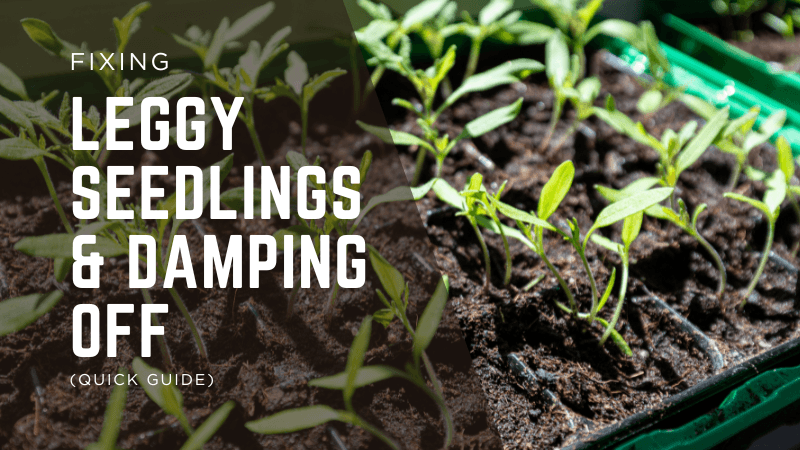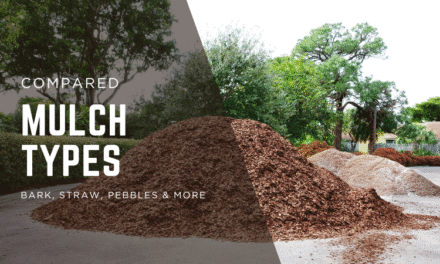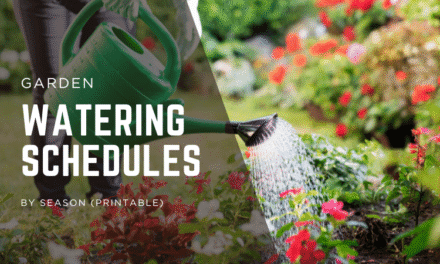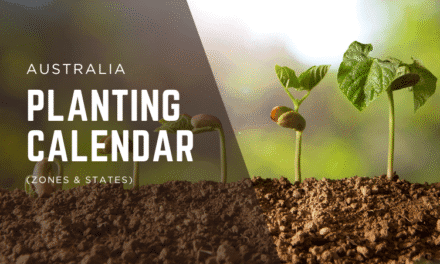This practical guide walks you through fast diagnosis and simple fixes for leggy seedlings and damping off. You’ll learn exactly how far to place lights, how long to run them, how to water from the bottom, and how to harden off for strong transplants. We’ll also cover sterile media, tray hygiene, temperature, and timing—so your next sowing stands up straight and resists collapse.
Fast Diagnosis
- Tall, thin stems leaning to a window → insufficient light.
- Sudden collapse at soil line → damping off (fungal).
- Yellowing leaves with wet soil → over‑watering and low airflow.
- Pale leaves + slow growth in cool rooms → temperature is too low after germination.
- Stems sturdy but leaves small → light ok, but nutrients depleted in tiny cells (up‑pot).
Leggy Seedlings — Why It Happens & Quick Fixes
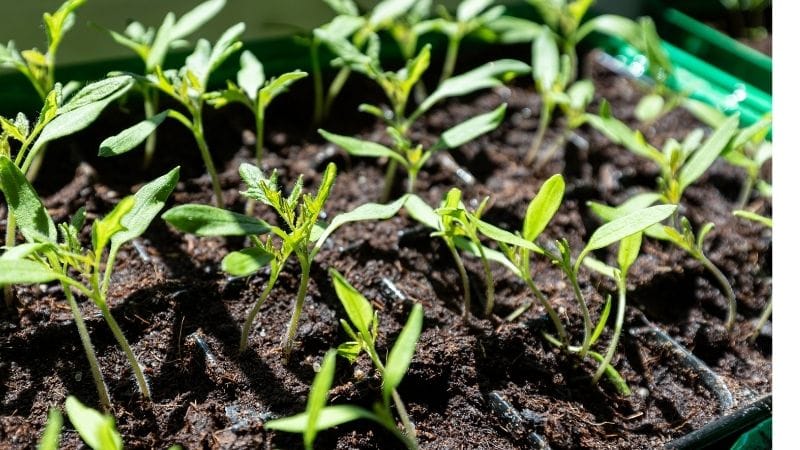
leggy seedlings are the classic outcome of too little light or light that’s too far away. Seedlings stretch rapidly toward the brightest source, leaving a long, weak internode between the soil and the first leaves. The fix is simple: reduce the distance to your light, increase hours to 14–16 per day, and add reflective sides so illumination is even from multiple angles. If you’re using daylight only, move trays to the sunniest window and rotate them twice a day, but be aware that most indoor windows in winter won’t match an LED grow light for intensity.
- Place LEDs 10–15 cm above canopies for most starts; raise the light as seedlings grow to keep distance constant.
- Run lights 14–16 hours/day for compact growth; use a timer so it’s automatic.
- Use white card, mylar, or foil as reflectors on three sides to minimise leaning.
- Keep seedlings within a tight ‘light box’ so every tray is uniformly lit.
Watering also influences leggy seedlings. Soggy media reduce oxygen and encourage lanky, weak growth. Bottom‑water: set trays in a shallow pan, let mix wick moisture for a few minutes, then drain the excess so the surface dries slightly between cycles. A small fan on low builds stronger stems and discourages fungal spores that worsen {primary_kw}.
Damping Off — What It Is & How to Stop It
Damping off isn’t one disease but a set of fungi/oomycetes (like Pythium and Rhizoctonia) that attack stems at the soil line. Seedlings look fine in the morning and are flattened by evening—stems pinch thin, turn brown or translucent, and the plant folds. Prevention beats cure: keep surfaces slightly dry, water from below, sanitise trays, and use a sterile seed‑starting mix.
- Sterile start: use fresh, fine seed‑starting mix and clean trays between cycles with hot soapy water (or a dilute bleach solution if needed).
- Airflow: run a fan on low, aimed past—not directly at—seedlings to avoid desiccation.
- Watering: bottom‑water; avoid splashing the stem line. Allow the top few millimetres to dry.
- Spacing: don’t sow too thickly; thin early to reduce humidity pockets around stems.
- Heat mats: great for germination, but remove or reduce heat once most seeds sprout to avoid steamy conditions at the surface.
Better Light, Better Seedlings (distances, hours, reflectors)
Light quantity (PPFD) and distance govern internode length. In practice you don’t need a quantum sensor—just stay close and consistent.
- LED distance: 10–15 cm above the leaves for most herbs and vegetables; dimmable lights can sit closer if heat is controlled.
- Hours: 14–16 hours/day for compact growth; 12 hours can work near bright windows but expect more stretch.
- Reflectors: white poster board gives a diffuse, even bounce; foil is fine in a pinch—crease it to avoid hot spots.
- Rotation: if one side still leans, rotate trays morning/evening until growth is centred.
If you still notice leggy seedlings under lights, verify the actual height—many growers think their lamp is ‘close’ but it’s 25–30 cm away. Use a ruler. Also check that the light covers the entire tray; edges often receive half the intensity and become {primary_kw}.
Airflow & Watering (fans, bottom‑watering, tray hygiene)
- Run a fan on low across the space to keep air moving and strengthen stems.
- Bottom‑water until the surface is just moist, then drain. Leave the top slightly dry.
- Use a turkey baster or syringe to remove standing water in tray lips.
- Clean between cycles; salt build‑up and algae signal chronic wetness.
Aim for a rhythm: quick morning checks, bottom‑water only when the top centimetre is dry, and give trays room to breathe. This routine reduces both stretch and damping off pressure.
Temperature & Timing (germination vs. growth)
Most seeds germinate fastest at 20–25 °C. After sprouting, slightly cooler air (16–20 °C) and strong light produce sturdier growth. Heat mats are wonderful for germination, but running them 24/7 post‑sprout can create a humid, steamy surface that invites damping off. Turn mats off during the day or remove trays once most seeds are up.
Media & Containers (depth, pricking out, pot sizes)
Use shallow trays for even moisture during germination, then prick out to individual cells once true leaves form. Over‑sized pots hold too much water for tiny roots, slowing establishment and increasing disease risk.
- Start in a fine, sterile seed‑starting mix. Avoid heavy composts early on.
- Prick out at the first true leaf and set the seedling slightly deeper to stabilise stems.
- Up‑pot gradually (e.g., 128‑cell → 72‑cell → 4‑inch) rather than jumping to large pots.
- Label sowing dates and varieties; older trays often show more stretch simply due to time under weak light.
Hardening Off & Transplanting (step‑by‑step)
1. Days 1–2: 2–3 hours outdoors in bright shade, protected from wind.
2. Days 3–4: 3–4 hours of gentle morning sun; bring inside if winds pick up.
3. Days 5–6: 5–6 hours with some midday exposure; monitor leaves for stress.
4. Day 7+: Full day outside if weather is mild. Transplant in late afternoon or a cloudy morning.
Transplant with care: water the tray an hour before, handle by leaves not stems, and plant at the same depth—except tomatoes, which can be buried deeper to root along the stem. Water in thoroughly and, if sun is harsh, provide temporary shade for a couple of days.
Rescue Moves (what’s salvageable, what to restart)

leggy seedlings that are otherwise green can often be saved: pot them deeper, improve light, and prune lightly once established to encourage branching. If stems are kinked at the base or seedlings have collapsed from damping off, it’s best to discard the worst trays, sanitise, and restart with fresh media. Don’t feel bad—restarts are faster and yield better than nursing doomed trays for weeks.
- Potting deeper stabilises and reduces flop (great for tomatoes, ok for many herbs).
- Cull the weakest 10–20%; give remaining seedlings more space and light.
- Start a fresh tray at the same time as you ‘rescue’—hedge your bets.
- Adjust your notes: distance, hours, and watering frequency for the next round.
Common Seedling Problems (at‑a‑glance)
- Edema (blistered leaves): watering late + cool nights → water earlier, increase airflow.
- Purple leaves: phosphorus stress from cold media → warm the root zone slightly.
- Tip burn: salt build‑up or too‑strong feed → flush with plain water, reduce strength.
- Moss/algae on surface: constantly wet surface → bottom‑water only, increase airflow and light.
Record‑Keeping & Continuous Improvement
A pocket notebook or phone log keeps you honest. Track light distance, hours, fan setting, and watering frequency. When leggy seedlings show up, your notes will reveal the cause in minutes. At the end of each cycle, jot what worked and what felt like a chore; small tweaks compound into sturdy, predictable starts.
Accessibility & Ergonomics
Design your seed‑starting area to be easy on your most tired day: waist‑height bench, short reach, a timer for lights, and a small fan on a stable shelf. Store sterile media, labels, and a syringe/turkey baster in one tote so you never search. If moving trays to a window is annoying, mount the light above a fixed station and bring the sun to your seedlings.
FAQs
How close should the light be to prevent leggy seedlings?
For most LEDs, 10–15 cm above the leaf canopy is a reliable starting point. Use a timer for 14–16 hours/day and keep the distance constant as plants grow.
What is damping off, exactly?
A group of pathogens that attack seedlings at the soil line in humid, stagnant conditions. It looks like a pinched, translucent stem. The cure is prevention: airflow, bottom‑watering, sterile media, and clean trays.
Can I save stretched seedlings?
Often. Pot deeper, improve light immediately, and consider topping once established to encourage branching. If stems are kinked or have collapsed, restart with fresh media.
Do heat mats cause problems?
They’re great for germination, but after sprout, constant bottom heat can create a steamy surface layer. Reduce heat or remove trays to keep the surface slightly dry.

